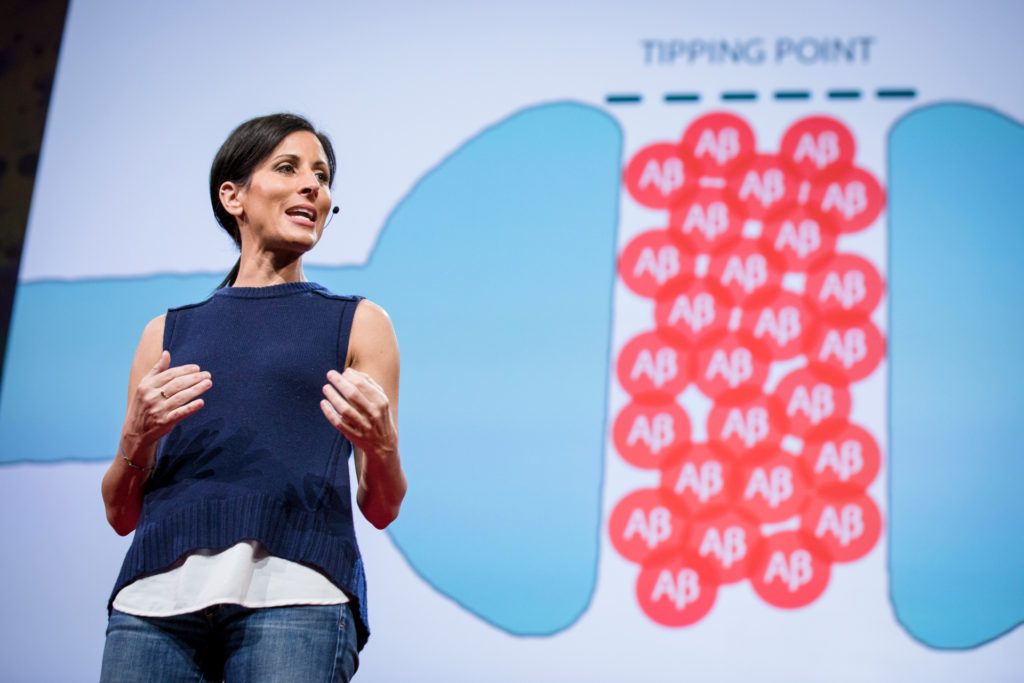Lisa Genova, neuroscientist and author of Still Alice, gave a TED talk early last year in Vancouver. Her remarks began with:
Let’s project out into the future, to your future “yous,” and let’s imagine that we’re all 85.
Now, everyone look at [the person beside you]. One of you probably has Alzheimer’s disease.
[Laughter]
Alright… maybe you’re thinking, “Well, it won’t be me.”
Then, OK. You are a caregiver.
Genova’s presentation clearly illustrates how Alzheimer’s comes into our lives. There’s the neuron, the synapse, amyloid plaques and tau. It’s one of the clearest explanations and briefest, I’ve seen in 22 years of working with caregivers for people with dementia!

Lisa Genova speaks at TED2017 – The Future You, April 24-28, 2017, Vancouver, BC, Canada. Photo: Bret Hartman / TED
She explains what we know about how amyloid beta plaques accumulate. Fifteen to 20 years before we experience memory, language, or cognitive impairment, we are accumulating these amyloid beta proteins. While the microglia – the janitors of the brain – are responsible for clearing out the beta amyloid, some of our “janitors” do a poor job. Meanwhile, the amyloid bundle together into sticky plaques and eventually destroy the synaptic connection.
She talks about the tipping point when we lose enough synaptic connections and our momentary lapses of memory turn into Alzheimer’s. We forget what our keys are for after wondering who put them in the refrigerator.
Preventing Alzheimer’s
Beyond our DNA and growing older – two factors we cannot change – she offers two actions we can take to prevent the accumulation of these destructive proteins.
Get Enough Sleep
Deep sleep gives our glial cells the opportunity to clear out the metabolic toxins that accumulate in our brains. When we lose sleep – even a single night – amyloid beta accumulates, which in turn disrupts sleep… and the cycle begins.
Maintain Cardiovascular Health
High blood pressure, diabetes, obesity, smoking, and high cholesterol have all been shown to increase our risk of Alzheimer’s. Don’t give these proteins time to do their damage. Exercise and eat a heart-healthy diet.
Yes, while we’ve heard this before, how many of us are doing something about it?
Cognitive Reserve
Even if our brains have the full-blown pathology, we may still resist the symptoms of Alzheimer’s. She cites the Nun Study where autopsied brains were riddled with plaques, despite the nuns showing no signs of Alzheimer’s while alive.
She gives a compelling example of how we can build cognitive reserve. Sure, higher education helps. There are other things we can do, too. View her recommendations of what we should be doing beyond crossword puzzles.
A worthwhile investment of 14 minutes of your time. I watched it three times across several months to really let her message sink in.
For more information read:
Neuroscientist Lisa Genova tries to take the stigma out of Alzheimer’s [4/7/2024 TCV Update: URL No Longer Available]








